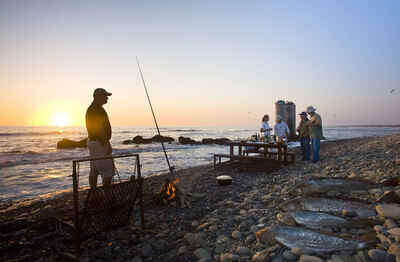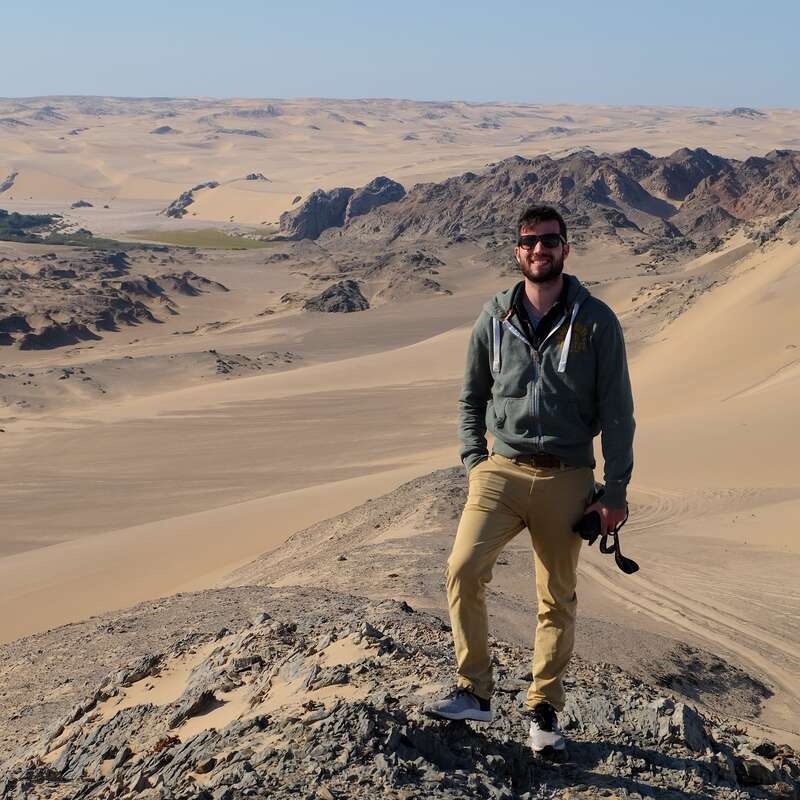About Terrace Bay
The isolated Terrace Bay Camp (which has been variously known as “Terrace Bay Restcamp" and “Terrace Bay ...
... Resort", although most people simply call it “Terrace Bay") stands at the most northerly point in the Skeleton Coast National Park that can be accessed by private vehicle. It has long offered basic accommodation and is run by the government-owned NWR (Namibia Wildlife Resorts).
Terrace Bay is truly unique: the camp is basic but is in an amazingly isolated, desolate spot. The service is usually friendly and the rooms are just functional, but if you want to explore the scenery and wildlife of the coast by yourself, then brace yourself for the long drive here. We think it’s worth it.
Our view
Terrace Bay is truly unique: the camp is basic but is in an amazingly isolated, desolate spot. The service is usually friendly and the rooms are just functional, but if you want to explore the scenery and wildlife of the coast by yourself, then brace yourself for the long drive here. We think it’s worth it.
Accommodation
22 rooms
Children
Best for 8+
Open
All year
Activities

Birdwatching

Fishing

Private activities

Self-guided walking
Traveller reviews of Terrace Bay
38 real, un-edited reviews from Expert Africa's travellers.
Arrived 3 Aug 2024, 1 nights
"Terrace Bay review"
Overall rating: Good
Arrived 31 May 2023, 1 nights
"Terrace Bay review"
Overall rating: Excellent
Arrived 3 May 2022, 1 nights
"Terrace Bay review"
Overall rating: Good
Arrived 1 Aug 2019, 1 nights
"Location, location, location"
Overall rating: Excellent
Arrived 28 May 2019, 1 nights
"Terrace Bay review"
Overall rating: Average
Arrived 21 Jan 2018, 1 nights
"Terrace Bay review"
Overall rating: Good
Arrived 26 Sep 2017, 1 nights
"Terrace bay 10 out of 10"
Overall rating: Good
Arrived 12 Apr 2017, 1 nights
"The end of the road at Terrace Bay."
Overall rating: Excellent
Arrived 16 Oct 2016, 1 nights
"very dated"
Overall rating: Excellent
Arrived 16 Oct 2016, 1 nights
"intersting but is it worth the drive?"
Overall rating: Poor
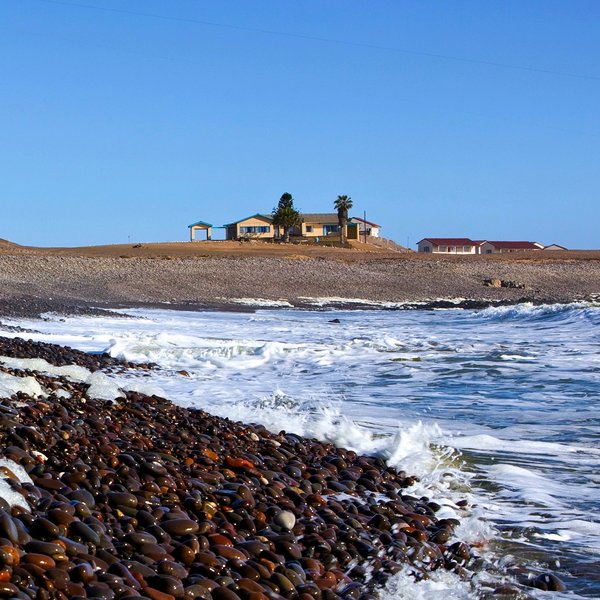

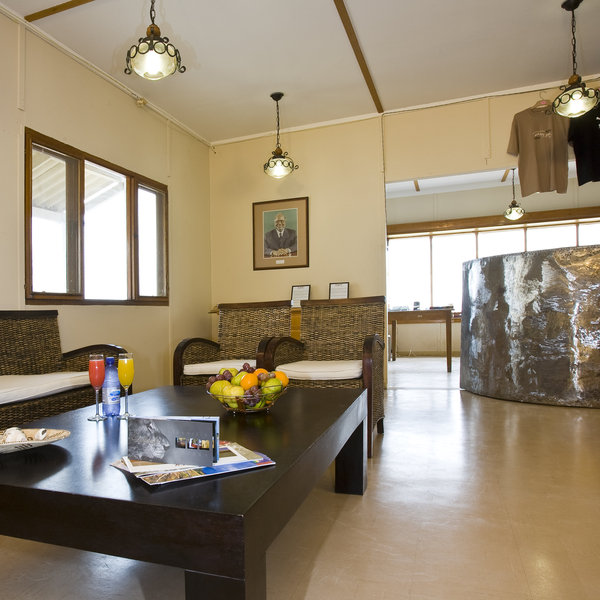
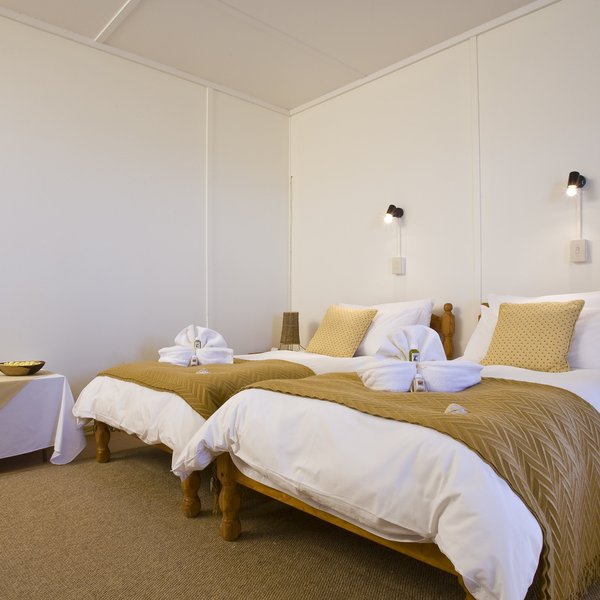
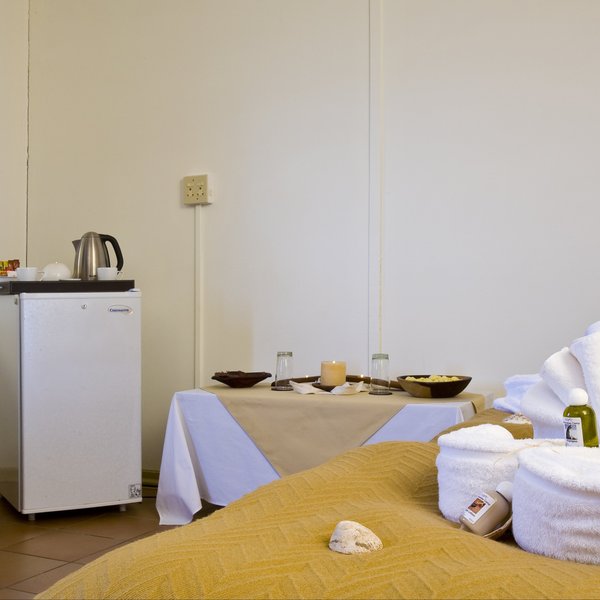
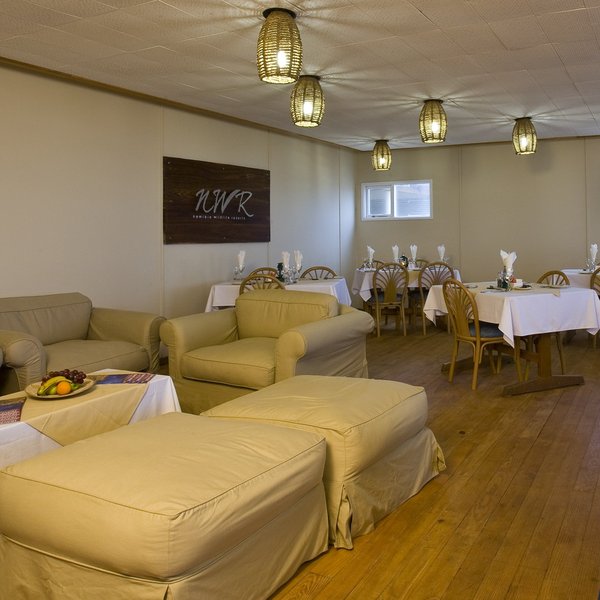
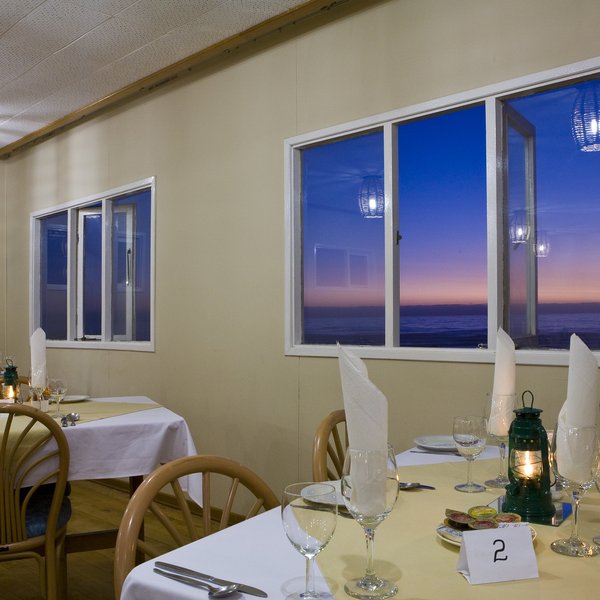
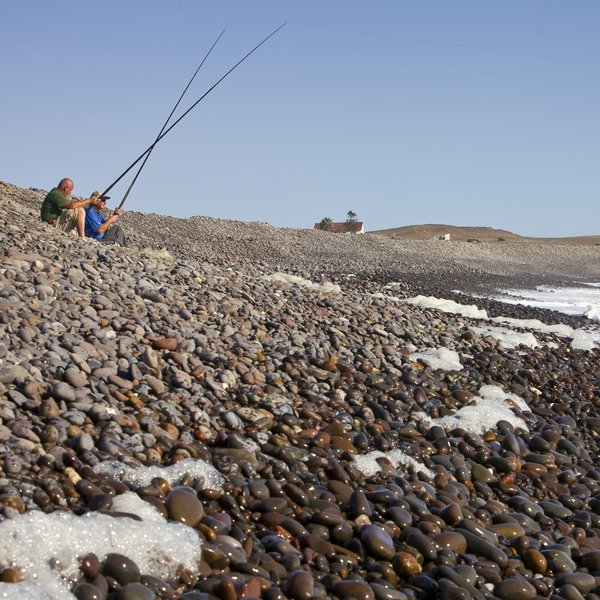
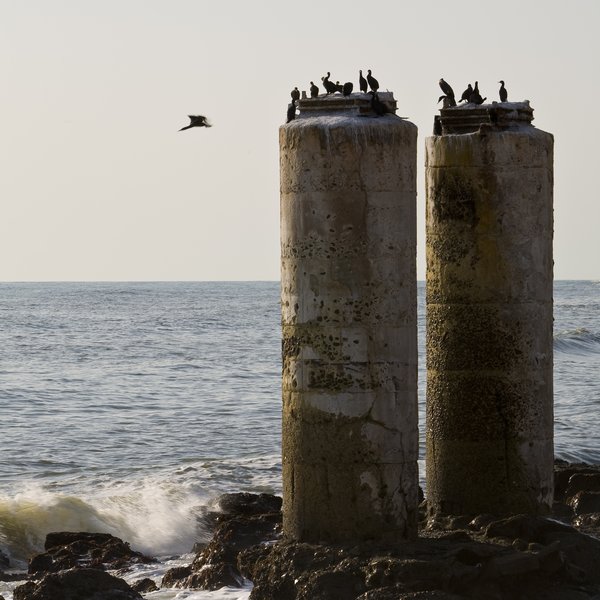
Expert Africa's gallery
When we travel we take lots of photos ourselves to give you a real and un-edited view of the trips. See our 13 pictures of Terrace Bay to get the candid view.
View galleryTerrace Bay: Our full report
The isolated Terrace Bay Camp (which has been variously known as “Terrace Bay Restcamp" and “Terrace Bay ...
... Resort", although most people simply call it “Terrace Bay") stands at the most northerly point in the Skeleton Coast National Park that can be accessed by private vehicle. It has long offered basic accommodation and is run by the government-owned NWR (Namibia Wildlife Resorts).
It’s a six-hour drive north from Swakopmund to Terrace Bay, and travellers must make a reservation in advance – so this isn’t the kind of place that travellers can ‘just drop into’ by accident. However, if you want to drive through the Skeleton Coast National Park, and especially if you want to have time to explore some of the river valleys around dawn or dusk, then stopping here might be a good idea.
It’s also worth noting that the scenery on the drive is arresting: it’s very stark and very desolate with occasionally great views of the Atlantic Ocean, the odd remains of a wreck to see, and a band of interesting barchans dunes near Torra Bay. Some love this road’s desolation; a few really hate it.
Terrace Bay Camp itself has been upgraded relatively recently, although its facilities and rooms are still pretty simple. The furnishings are perfectly adequate, and much of what’s there (the beds, the linen, etc.) is quite nice, but there’s no sense of design, and very little atmosphere.
There are two beach chalets and twenty double rooms at Terrace Bay, all of which have private toilets and showers. Towels, a few toiletries and tea/coffee making facilities are provided, however overall the level of accommodation is fairly basic.
On our first visit to Terrace Bay, in 1992, one of the Expert Africa team (then Sunvil Holidays!) had Christmas dinner at the restcamp with the president and his entourage; it seems that President Sam Nujoma used to often take his Christmas Holidays here – in the Presidential Suite!
All meals at Terrace Bay Camp will be cooked for you, the food has improved in recent years (from a low base) just do not expect haute cuisine! The main restaurant offers individual tables and a small communal seating area.
There is a small shop on site that sells alcohol, frozen meat and limited supplies. There is also a garage selling petrol nearby, which is particularly handy, as Terrace Bay is a very long way from anywhere else: it’s about six hours’ drive from Swakopmund, or two and a half hours’ from the nearer lodges in Damaraland.
Thus Terrace Bay often becomes a one-night stop for those wishing to experience the remoteness that Skeleton Coast National Park en route to Damaraland.
When you’re at Terrace Bay Camp, there aren’t many activities available – and none of them are ‘guided’. The main activity for visitors here is fishing, as it does offer world-class beach fishing, for which most people bring their own tackle and kit. (A limited selection of hooks, line and bait is usually available.) Note that serious fishermen will also buy their permits in advance.
The waters off Namibia are part of what’s known as the “Benguela Current Large Marine Ecosystem", or BCLME. This is a system of water currents – most notably the Benguela Current travelling north from the Antarctic – that together lead to an upwelling of nutrient-rich water from lower layers of the ocean to the well-lit surface.
The net result is that the waters here form part of one of the most productive ocean areas in the world. Hence the fishing is first-class and attracts anglers from all over Southern Africa.
Aside from the fishing, a visit to Terrace Bay makes visiting some of the beds of the ephemeral rivers in this area easier. Driving from Swakopmund, you’ll pass through the beds of the Omaruru River, the Ugab River, the Huab River, the Koigab River, and finally – the most accessible and often the most interesting – the Uniab River.
Quietly and carefully wander around these and there’s often evidence of wildlife, though watch out for the larger species, like elephants, who may occasionally come here. There’s reported to be a small waterfall in the Uniab River, within walking distance of the coast … but nobody from the team has actually found this yet! Note that wandering around in such a desolate area isn’t everyone’s idea of fun … but we loved it!
Birdwatching can also be productive here, often in these river valleys, but also along the coast. Meanwhile, in the evening take a stroll around the camp as the building which houses the generator often has flocks of cormorants roosting on it to keep warm. These, in turn, attract the attentions of local jackals and brown hyena, which can sometimes be seen skulking nearby.
Activities
Birdwatching
Fishing
Private activities
Self-guided walking
Families & children
- Attitude towards children
- Terrace Bay Camp is happy to welcome children here, though provides little in the way of attractions or facilities specifically for them.
- Generally recommended for children
- We’d be very concerned that there isn’t much for younger children to do here; we’d expect them to get bored quite fast! Hence we wouldn’t recommend it except for older children. We’d also comment that the ocean here is very powerful and very cold indeed – so parents will want to ensure that any children stay well clear of the breaking waves.
Food & drink
- Usual board basis
- Bed & Breakfast
- Dining style
- Individual Tables
- Dining locations
- Indoor Dining
- Further dining info, including room service
- Room service is not available.
- Drinks included
- No drinks are included
Our travellers’ wildlife sightings from Terrace Bay
Since mid-2018, many of our travellers who stayed at Terrace Bay have kindly recorded their wildlife sightings and shared them with us. The results are below. Click an animal to see more, and here to see more on our methodology.

50% success

0% success

0% success
Getting there
- Location
- Skeleton Coast & Kaokoland, Namibia
- Ideal length of stay
- The reason to come to Terrace Bay is to explore the Skeleton Coast, so most people only drop in for a single night - although keen fishermen may stay for longer.
- Directions
- Terrace bay is almost 287km north of Henties Bay - or 363km north of Swakopmund. It's a very long drive, mostly on a 'calcrete' or 'salt' road!
- Accessible by
- Self-drive
Health & safety
- Malarial protection recommended
- No
- Medical care
- The nearest doctor is probably in Henties Bay - about 4-5 hours' drive south along the Skeleton Coast.
- Dangerous animals
- Moderate Risk
- Fire safety
Useful info
- Disabled access
- Not Possible
Plan and book your trip with Expert Africa
All of our trips are tailor-made, so we'll always adapt them to suit you. Talk to an Expert and let us plan and arrange your perfect trip.

Talk to an Expert
Call or email us now! We’ll match you with the Specialist in our team who is best suited to help you. Then together we can start planning your trip.

Set up your itinerary
Based on our experience and your ideas, your specialist will create a detailed, costed itinerary. We’ll refine it together, until we have a trip that you’re perfectly happy with.

Prepare for your trip
The same Specialist will make the seamless arrangements for your trip, send you detailed travel documents, and be available to answer any questions before you depart.

Travel with peace of mind
After you set off, you’ll be cared for by our partners in Africa, most of whom have worked with Expert Africa for decades. And if you ever need us urgently, we’re available 24/7.

When you return
We love to learn about your trip, and so will always be grateful if you’ve the time to give feedback to your Specialist when you return.
Terrace Bay's location
Look closer at the environment and surroundings of Terrace Bay.
Other lodges in Skeleton Coast & Kaokoland
Alternative places to stay in this same area.
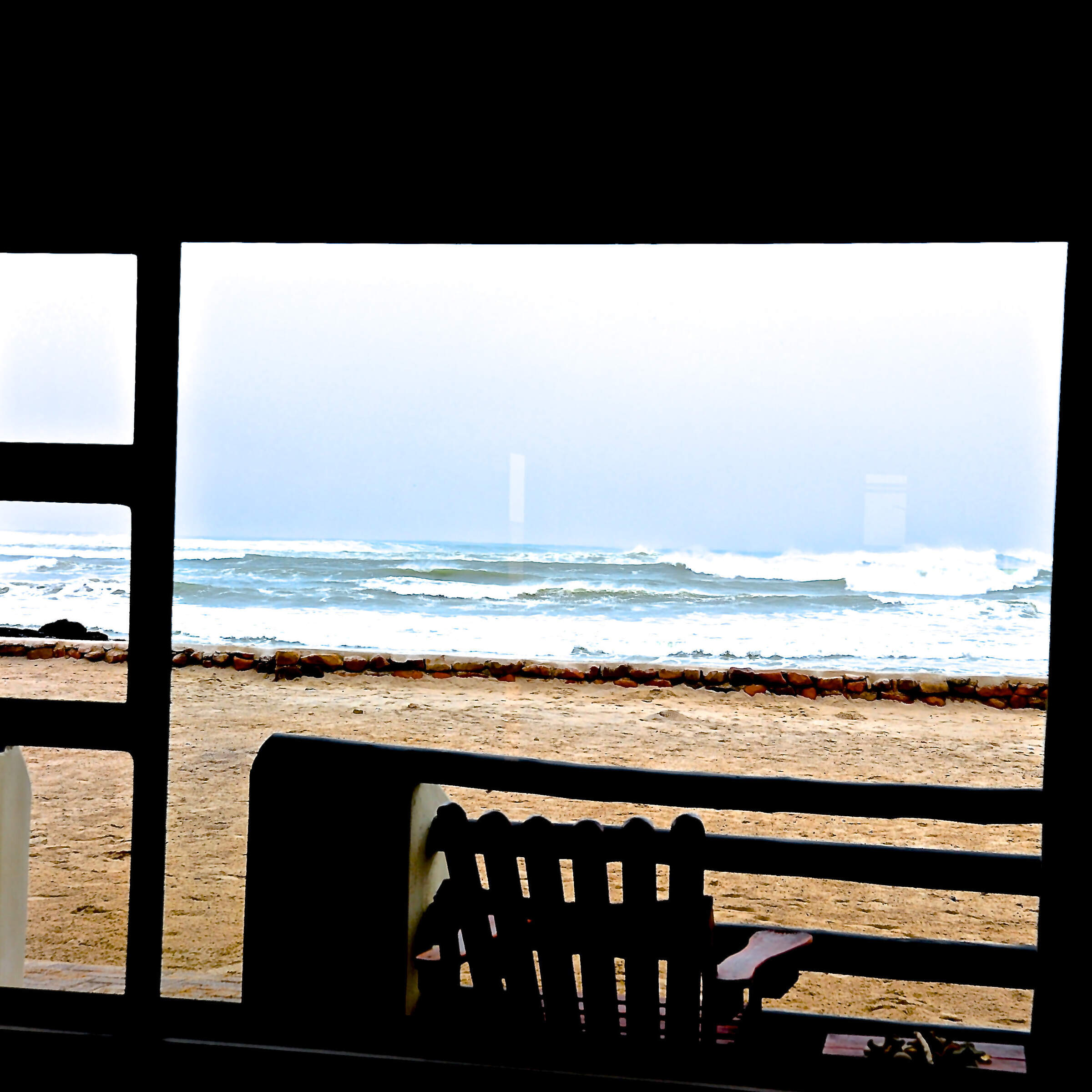
Cape Cross Lodge
Right on the Skeleton Coast, between Swakopmund and Damaraland, Cape Cross Lodge has easy access to Cape Cross Seal Reserve.
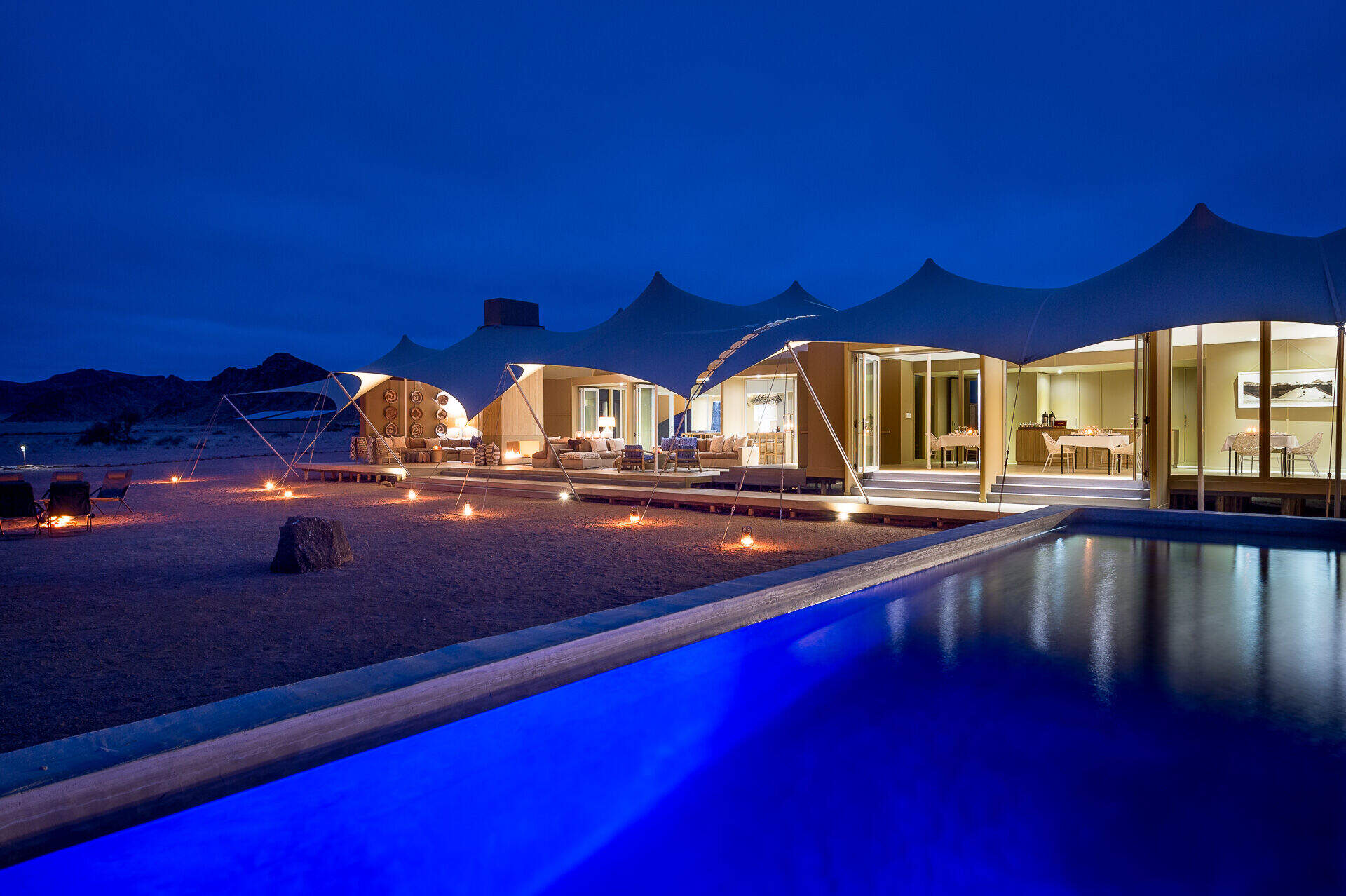
Hoanib Skeleton Camp Camp
Hoanib Skeleton Coast Camp is actually situated 42km inland in Kaokoland, this said they offer a superb guided day trip to the coast.
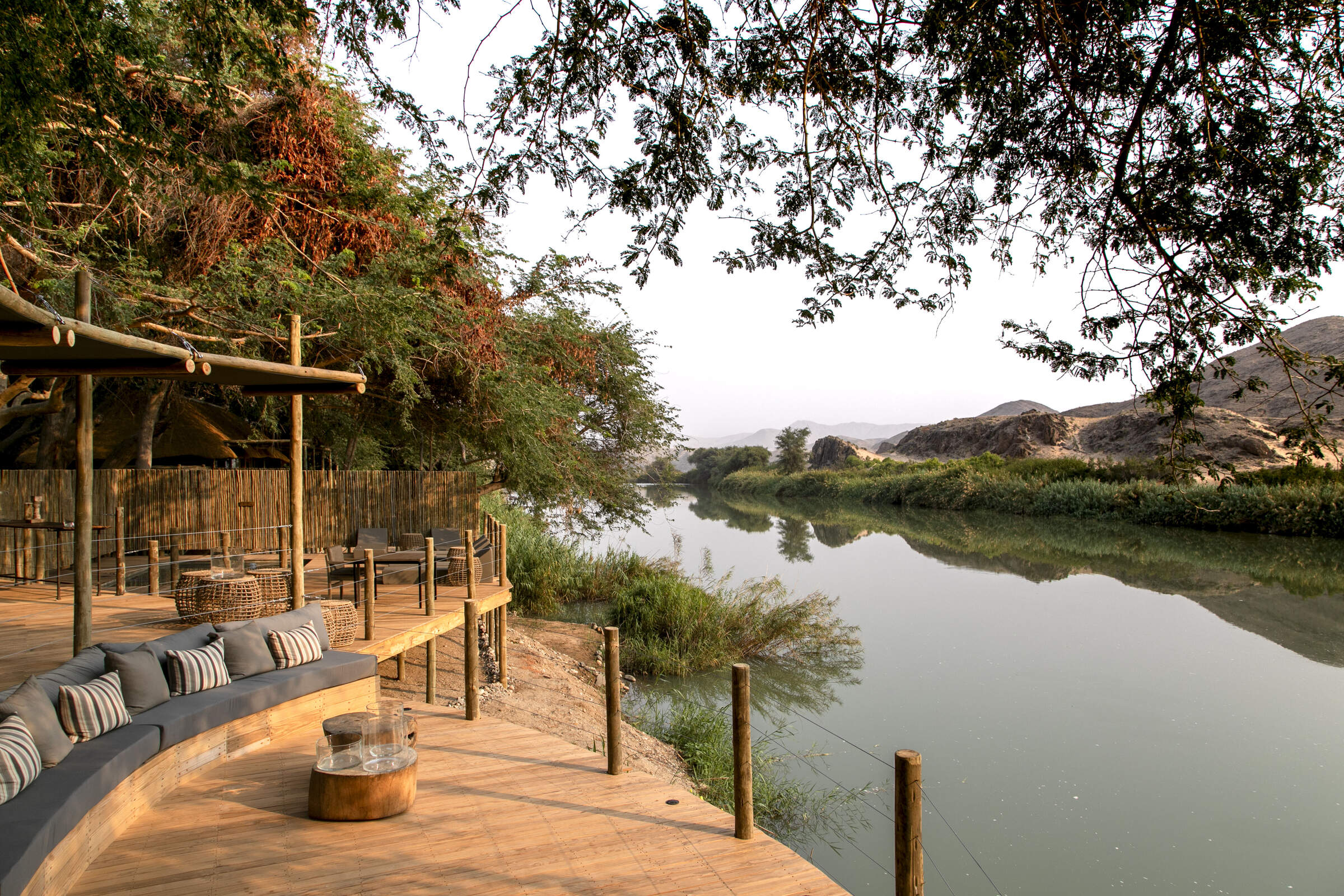
Serra Cafema
The luxurious Serra Cafema is in the most remote corner of Namibia - at the north end of Hartmann's Valley, across the Kunene River from Angola.
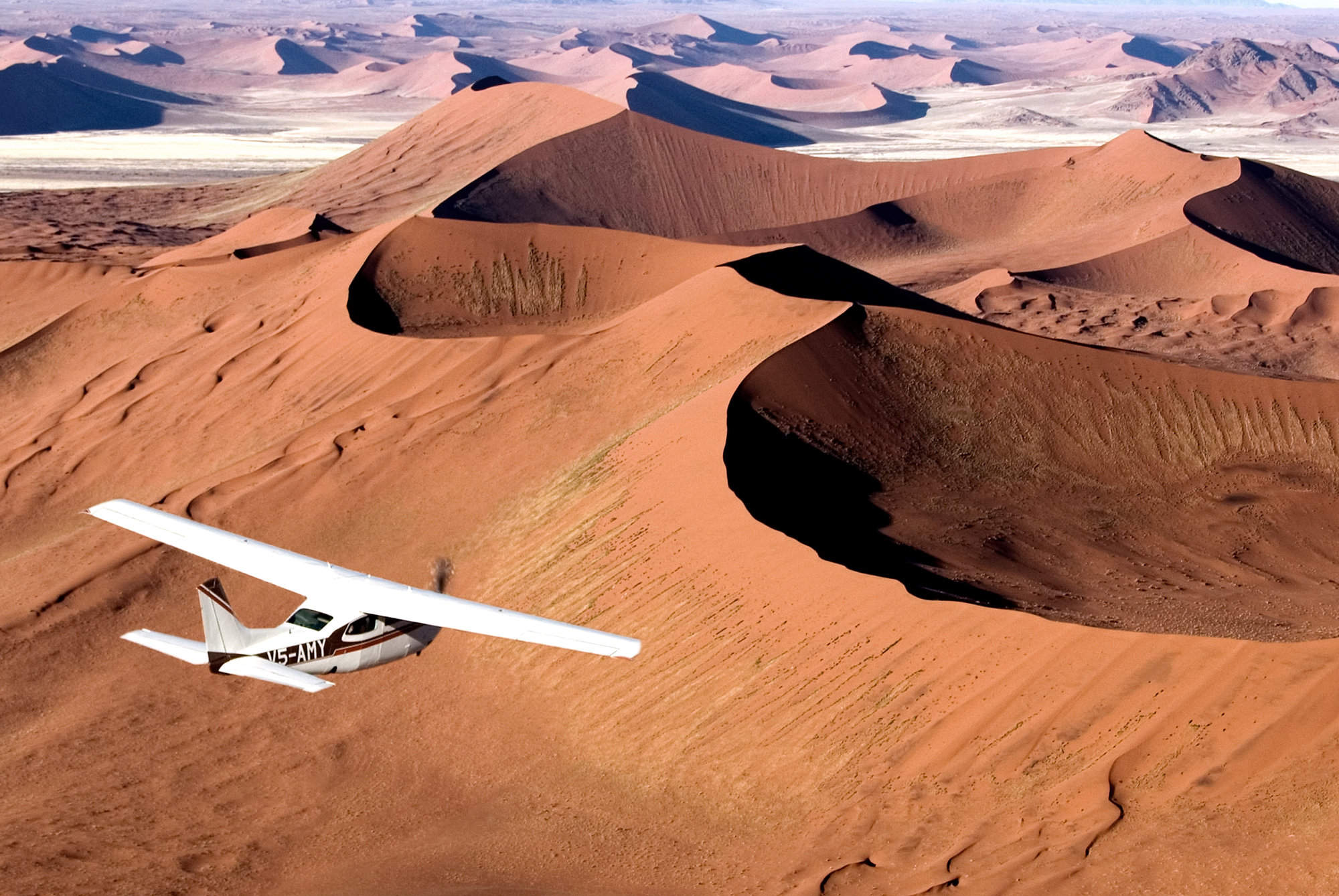
Skeleton Coast Safaris
Skeleton Coast Safaris is a small, family-run operation that has organised inspirational trips to this remote area of Namibia for nearly 50 years.
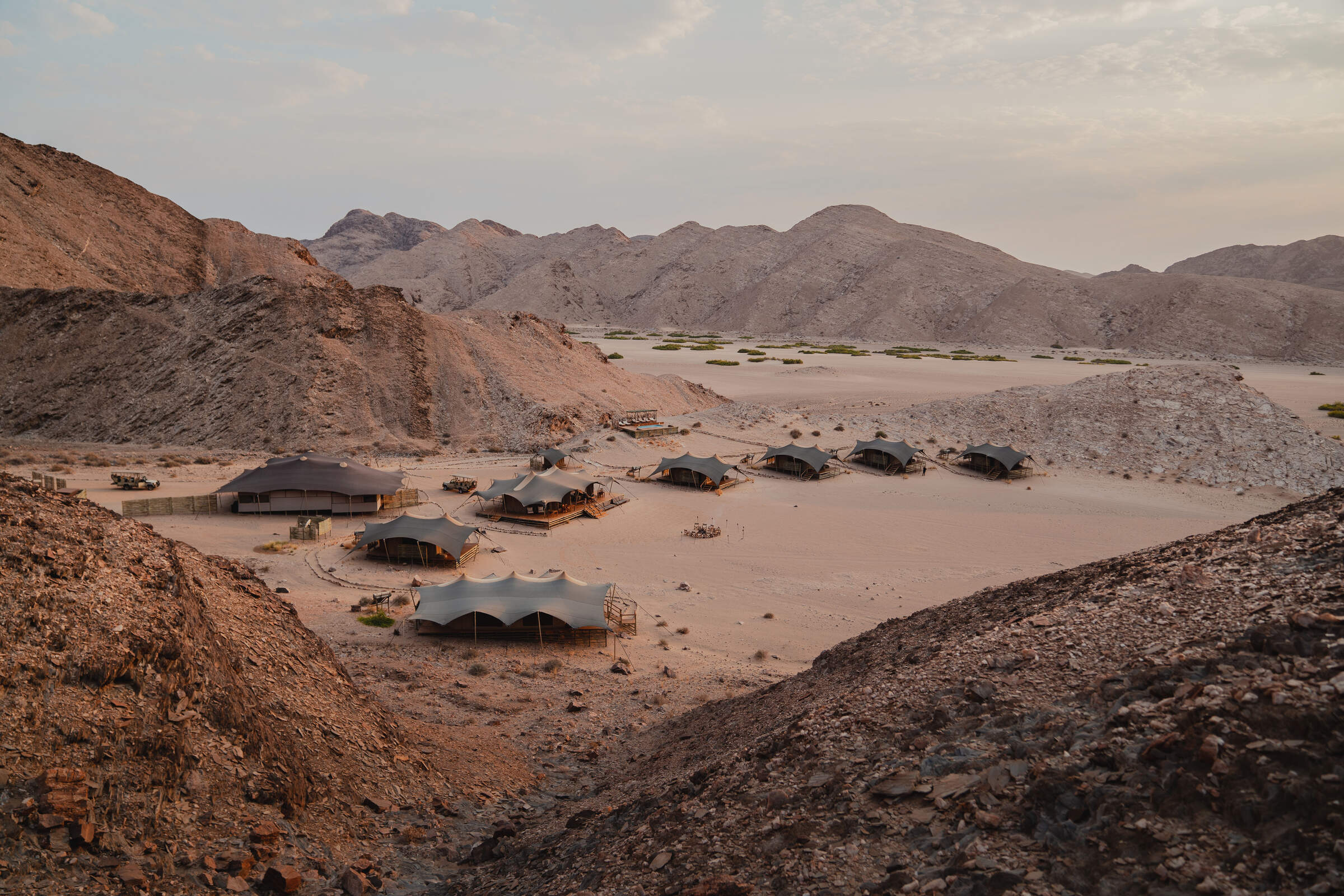
Hoanib Valley Camp
The intimate and remote Hoanib Valley Camp offers a rare chance to explore this dramatic corner of Namibia and to search for its sparse desert-adapted wildlife.
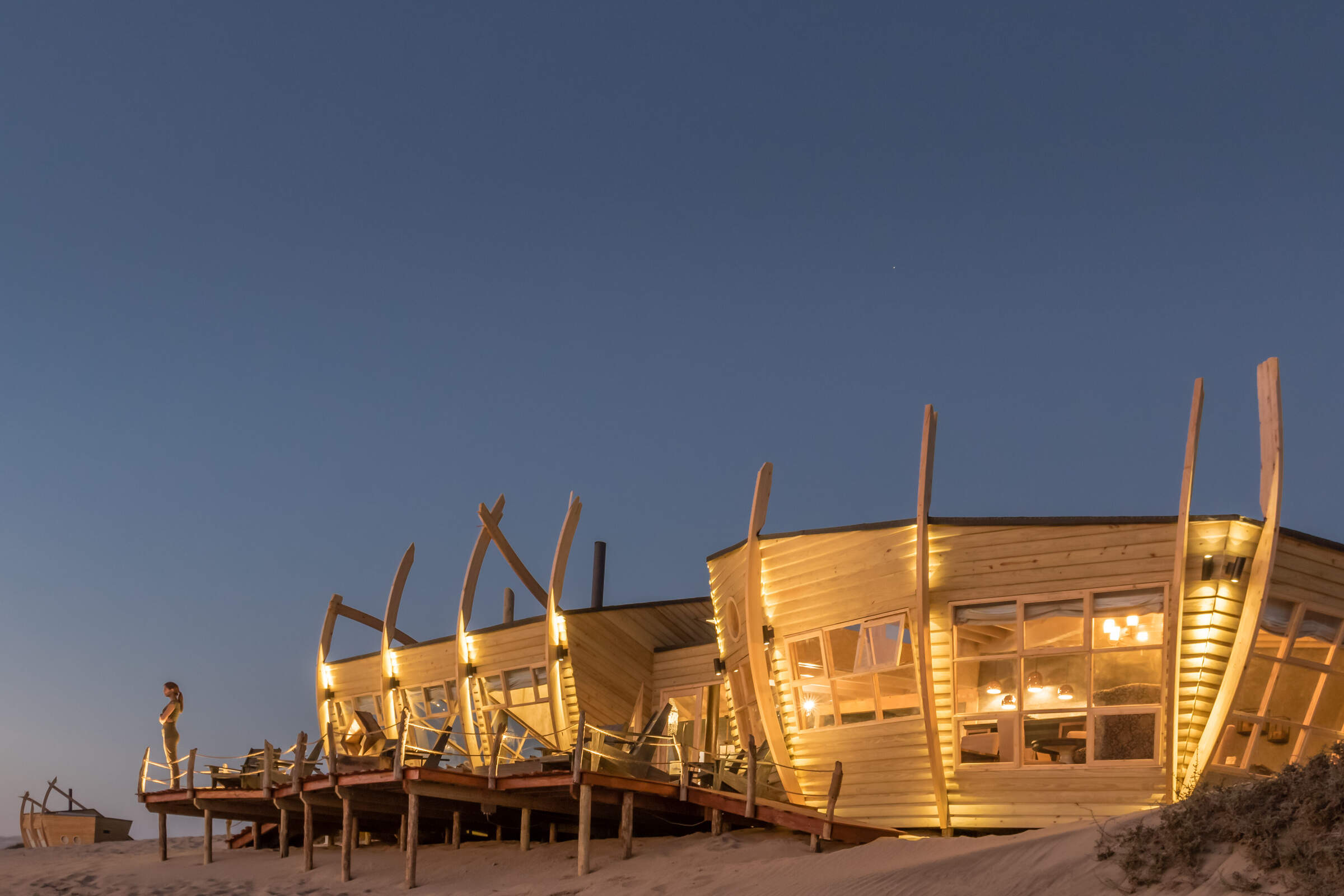
Shipwreck Lodge
The only property on this desolate stretch of coastline, the extraordinary Shipwreck Lodge opens up a new section of the Skeleton Coast National Park
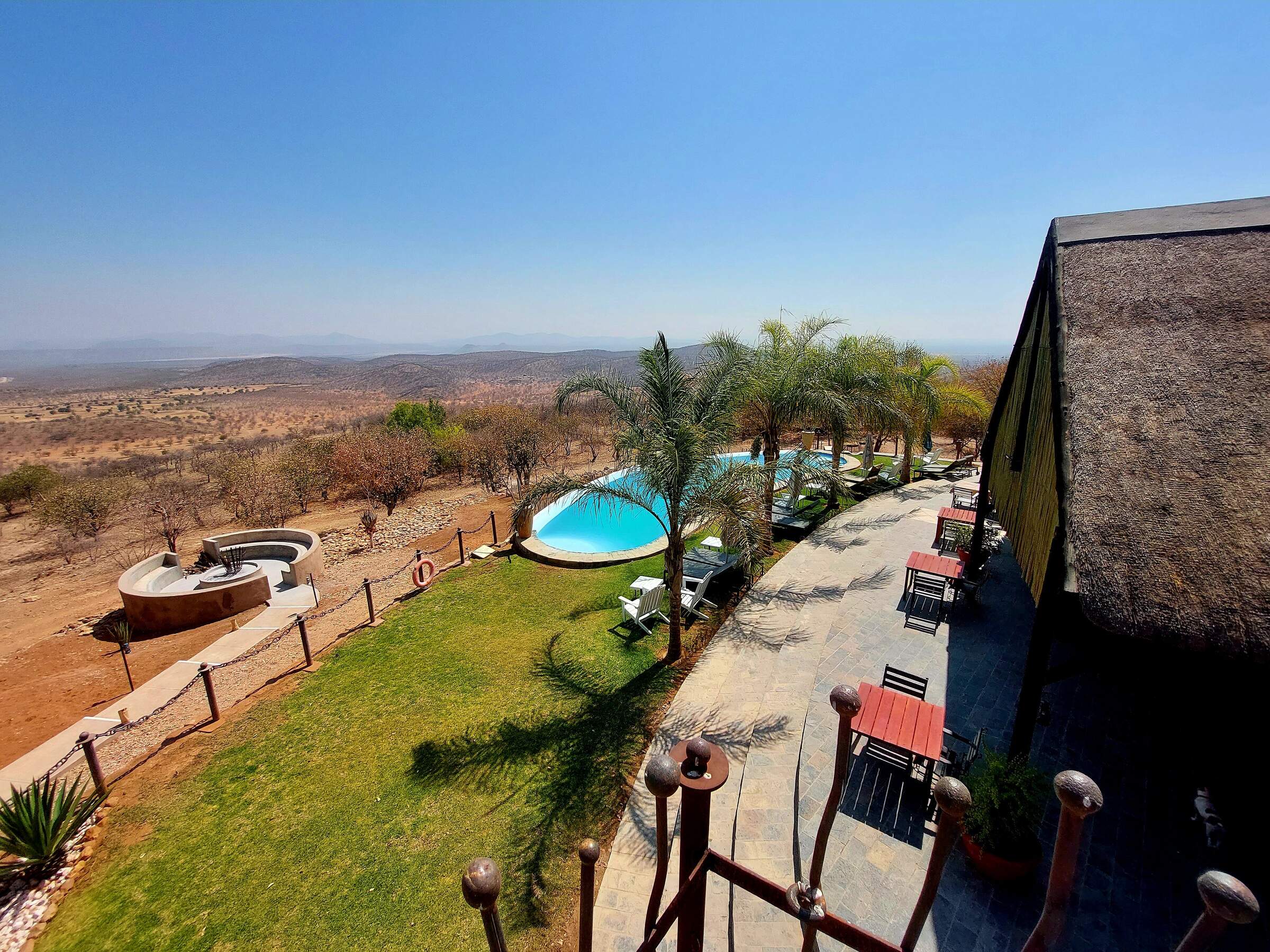
Opuwo Country Lodge
Opuwo Country Hotel provides comfortable accommodation is well situated for a night's stop before travelling into remote parts of Kaokoland.
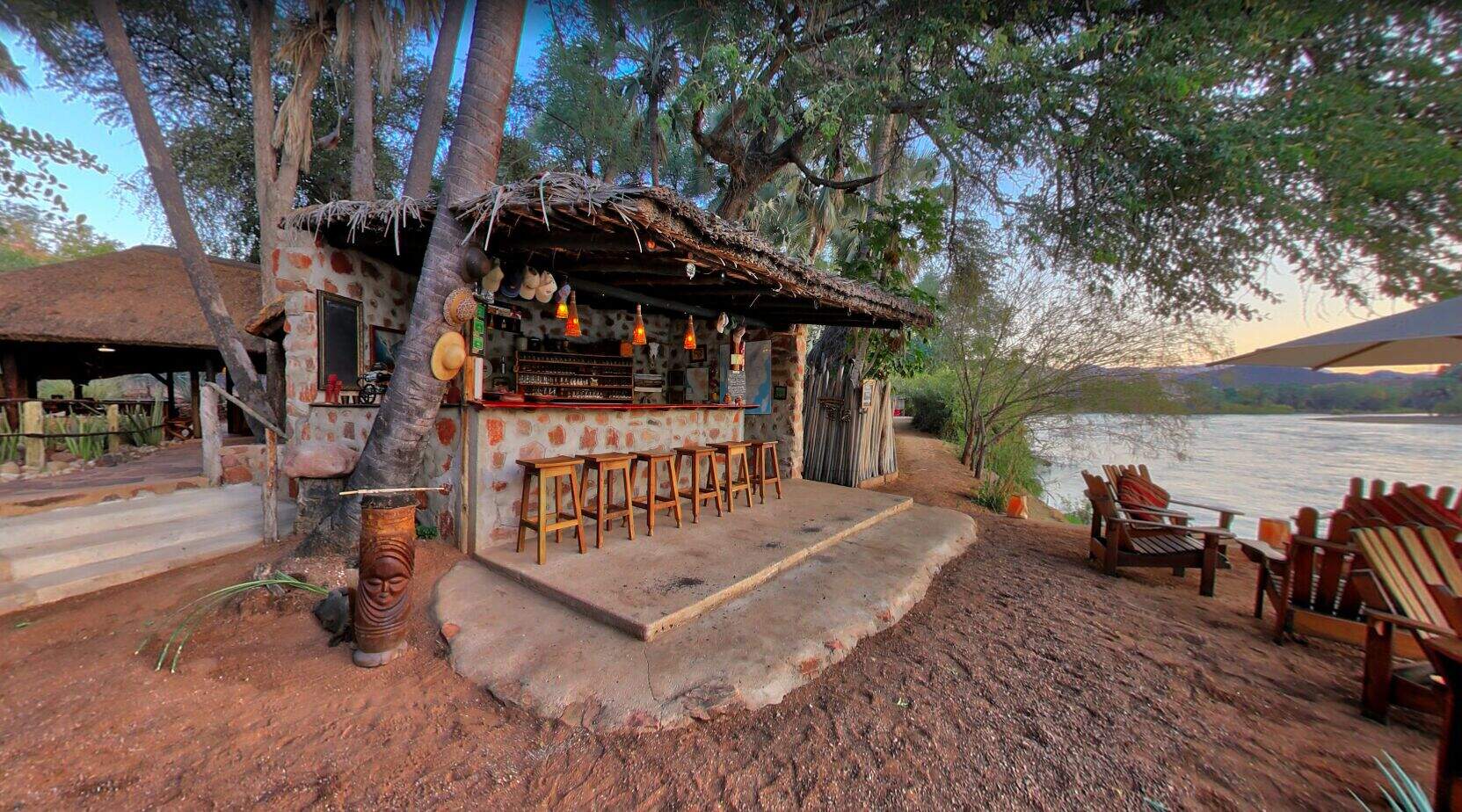
Epupa Camp
Epupa Camp is a welcoming oasis set on the palm-fringed banks of the Kunene River in north-west Namibia and close to Epupa Falls.
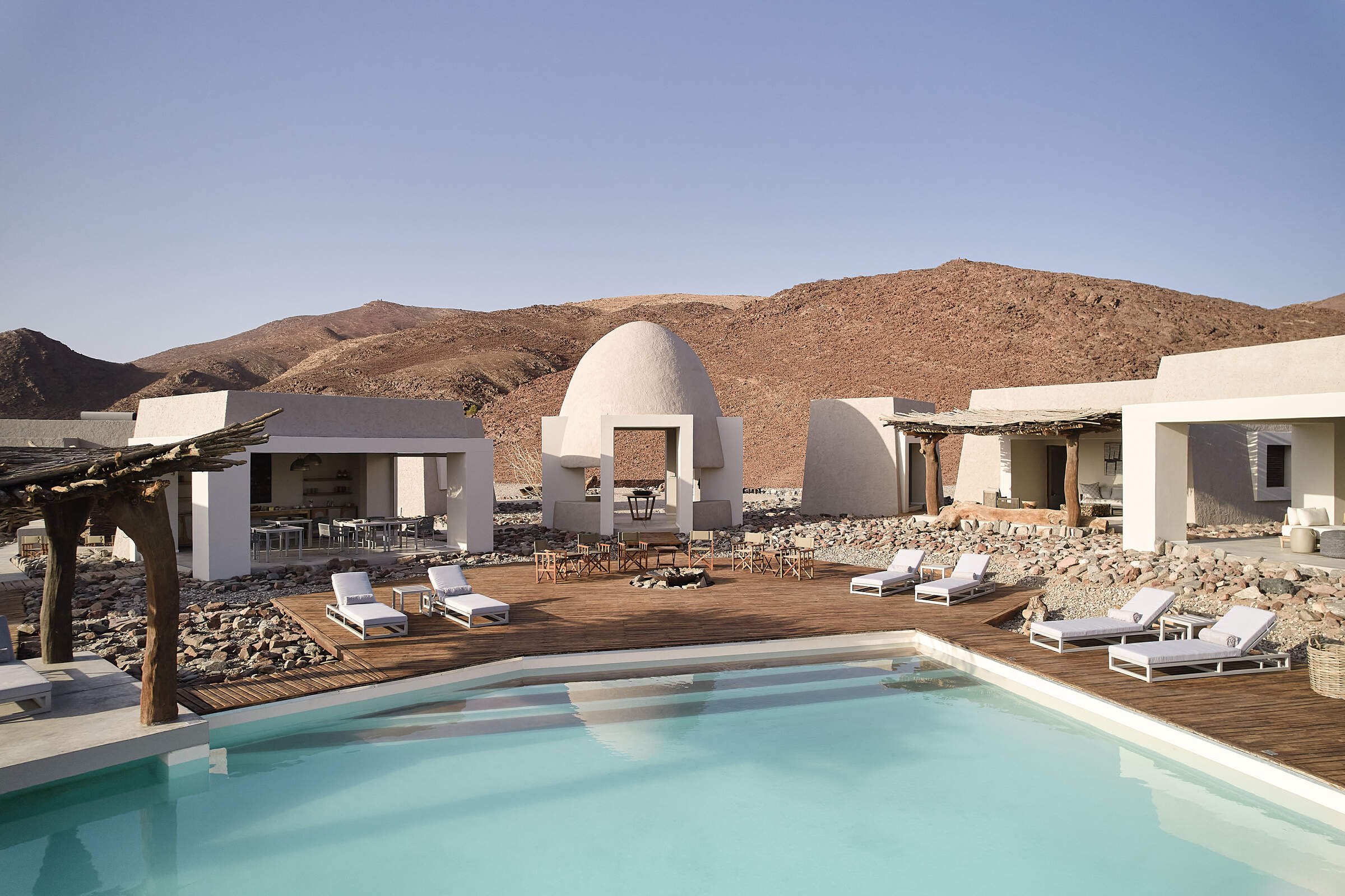
Okahirongo Elephant Lodge
Tucked away in Namibia's remote north-west, Okahirongo Elephant Lodge offers an unexpected level of luxury, with stunning views and plenty of activities.
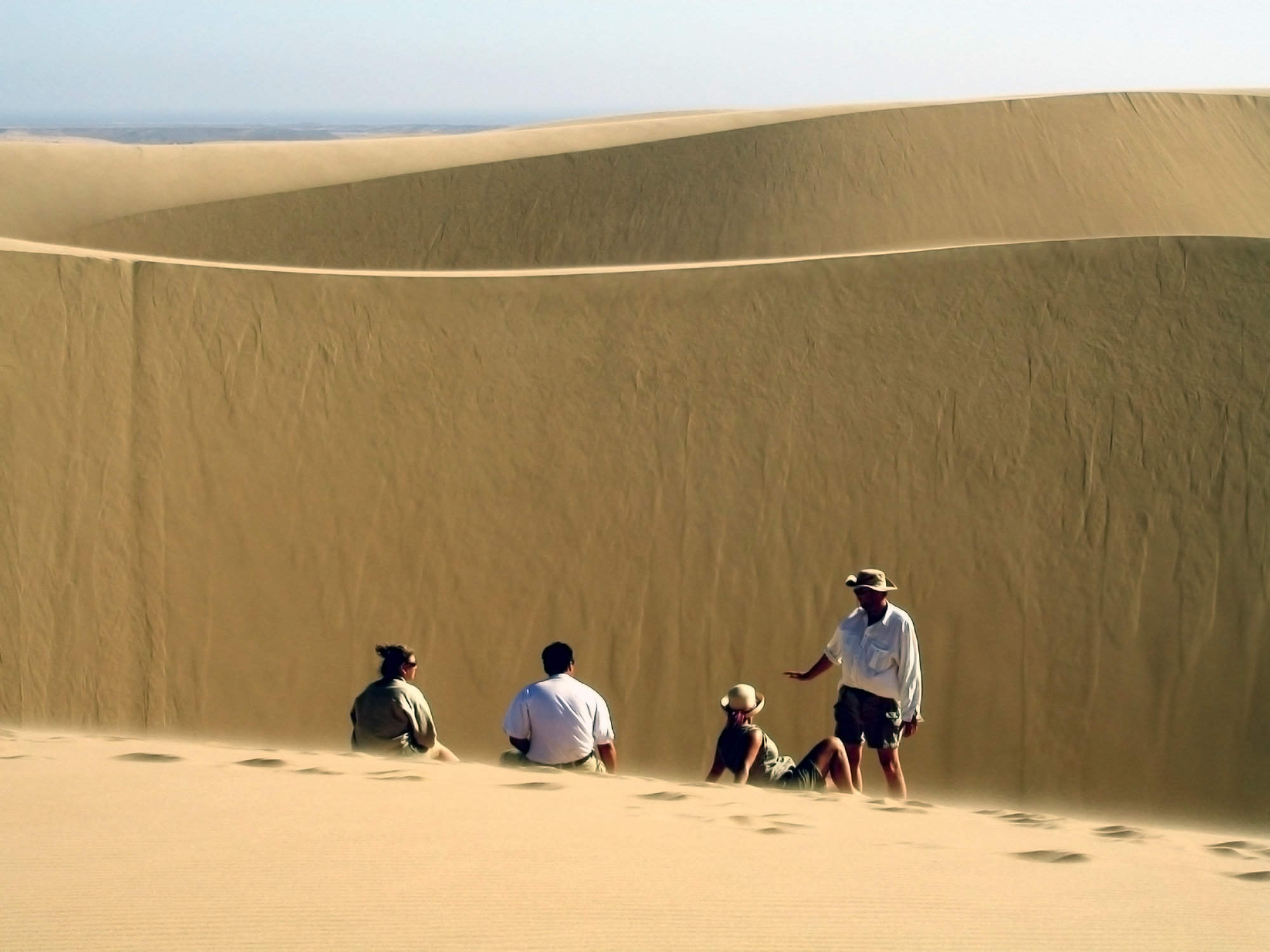
Kuidas Camp
Usually the first-night stop on a Schoeman Skeleton Coast safari, Kuidas is a very simple camp with stunning views of the Huab River valley.
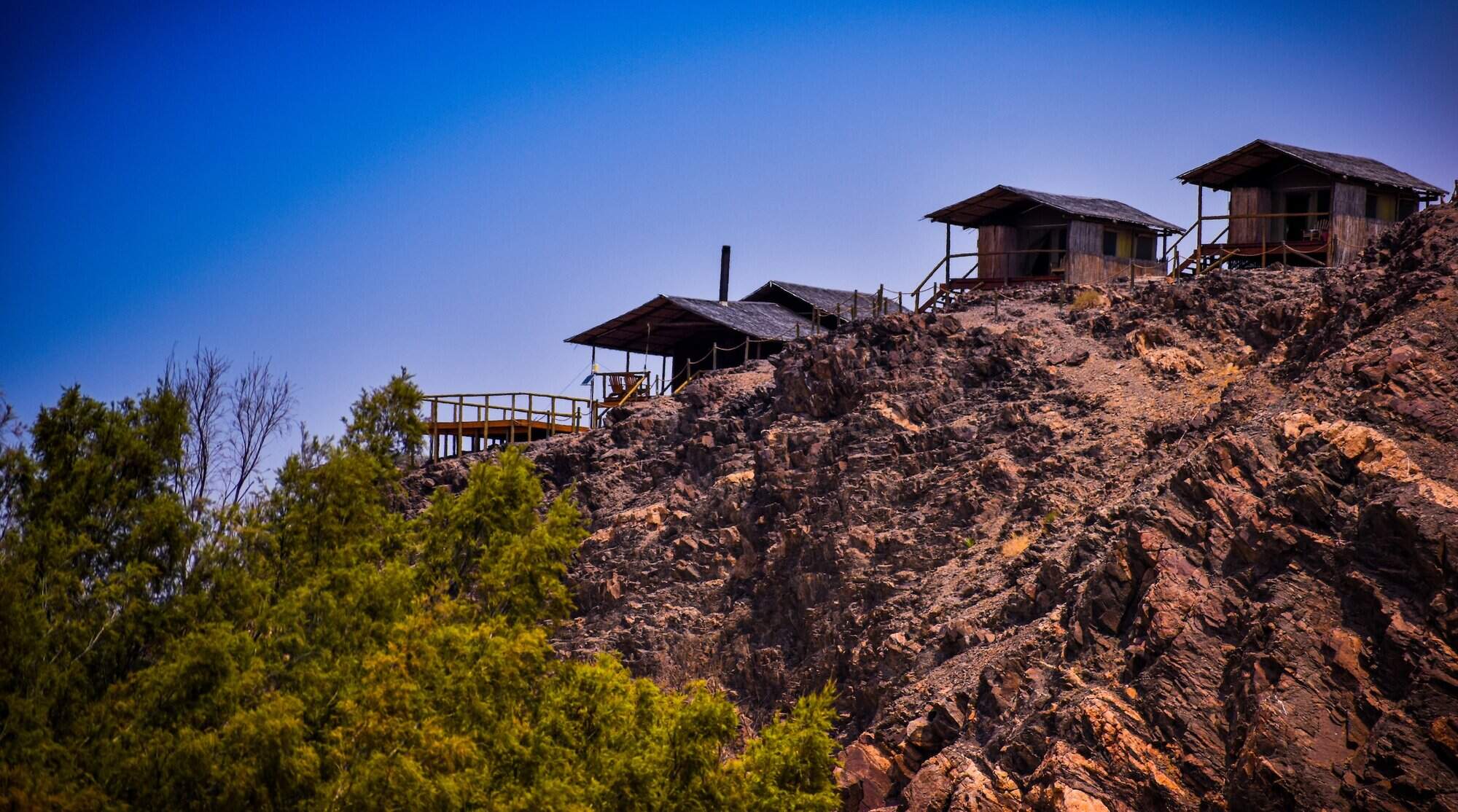
Leylandsdrift Camp
Used exclusively on the second night of a Skeleton Coast Safari, Leylandsdrift is in a beautiful location and is a good place to track desert-adapted elephants.
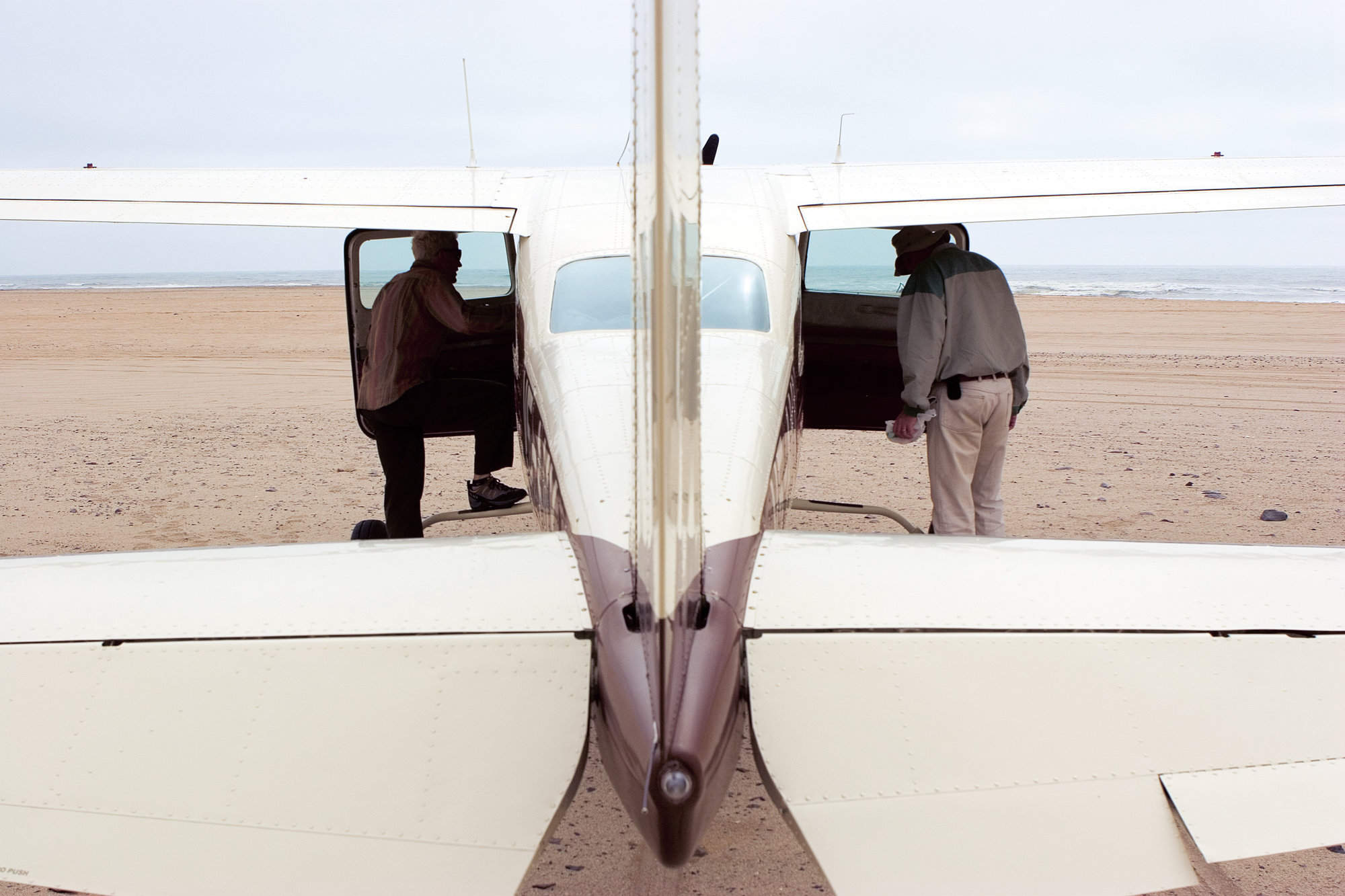
Kunene River Camp
Used exclusively on the final night of a Skeleton Coast Safari, the simple Kunene River Camp occupies a dramatic riverside location with some excellent birding.
When to go to Skeleton Coast & Kaokoland
Our month by month guide: What it's like to visit Terrace Bay in Skeleton Coast & Kaokoland
Jan
Feb
Mar
Apr
May
Jun
Jul
Aug
Sep
Oct
Nov
Dec
Skeleton Coast & Kaokoland in January
The Skeleton Coast experiences its rainy season in January, though precipitation remains sparse in this desert environment. The Ugab River and other ephemeral rivers may briefly come to life, creating a spectacle in the usually arid landscape. Despite the rain, temperatures can still reach around 30°C/86°F.
The greening landscape makes a refreshing change, especially in desert dune seas. Migrant species arrive in force, making it an excellent time for birdwatching along the coast and in areas like the Swakop River. In the northern part of the Skeleton Coast National Park, where rains are more reliable, desert animals look healthy, with shiny coats, due to the abundance of food.
- Variable weather with fog common along coast
- Cape fur seal pups growing rapidly at colonies
- Wildlife looking well fed, with shiny coats
- Few tourists, low rates at lodges and camps
- Occasional thunderstorms inland from the coast
Our view
This is not a great time to visit
Weather in January
Skeleton Coast & Kaokoland in February
February is typically the wettest month on the Skeleton Coast, though rainfall remains patchy. The central highlands near the park's eastern border and the Kunene River region can see heavier rain. Some February days are clear and hot, while others are cooler with building clouds, sometimes culminating in short, spectacular thunderstorms. These storms can generate flash floods in the park's ephemeral rivers, bringing them dramatically to life.
The landscape feels green and alive, with insects and smaller animals more easily seen. Many birds and animals in the Skeleton Coast National Park are raising their young during this time. However, the formation of small pools in the bush and thicker vegetation can make it challenging to spot larger wildlife as they disperse with easy to access water, especially in the northern sections of the park.
- Coastal fog persists, creating eerie atmosphere
- Seal colonies bustling with activity
- Desert-adapted wildlife more dispersed
- Low tourist numbers, great deals available
- Possible inland thunderstorms, coast stays dry
Our view
This is not a great time to visit
Weather in February
Skeleton Coast & Kaokoland in March
March usually sees the Skeleton Coast's main rains tailing off, though precipitation varies across the park. Many days are clear with strong sun, while others may end with short, spectacular thunderstorms, particularly in the inland areas. These storms reduce in frequency as the month progresses.
The landscape often appears vivid and green, especially around the Ugab and Hoanib rivers. Many birds and animals are finishing raising their young, so smaller animals and insects are in evidence. In the northern part of the Skeleton Coast National Park, where rains are generally heavier, pools in the bush and thicker vegetation can make it difficult to spot larger animals. However, this is an excellent time to observe desert-adapted wildlife thriving in the temporarily lush environment.
- Weather becoming more stable along coast
- Seal pups learning to swim at Cape Cross
- Animals well-fed after inland rainy season
- Wildlife harder to spot in expansive desert
- Few tourists, ideal for solitude seekers
Our view
A good time to visit, with pros & cons
Weather in March
Skeleton Coast & Kaokoland in April
April typically brings dry weather to the Skeleton Coast, with an ever-decreasing chance of rain. Temperatures fall below their summer peak but remain pleasant and warm during the day. Nights might have a slight chill, especially in desert areas. The rains usually leave many parts of the park verdant and green, so animals are in fantastic condition, often with fast-growing young in attendance.
With less dust in the atmosphere, photographers can capture clear shots of spectacular landscapes and healthy animals. Stargazing becomes increasingly rewarding as the month progresses. In the northern sections of the Skeleton Coast National Park, water and food remain in plentiful supply, so finding big game can be trickier than later in the year. However, this is an excellent time for observing a wide variety of wildlife.
- Cooler nights, pleasant daytime temperatures
- Migrant birds begin departing the coast
- Desert flora starting to dry out inland
- Easter brings slight increase in visitors
- Clear conditions for sharp photographs
Our view
A good time to visit, with pros & cons
Weather in April
Skeleton Coast & Kaokoland in May
By May, the Skeleton Coast is usually drying out fast. If the rains have been good, the land remains green, but wildlife starts to congregate at more permanent water sources like the Hoanib and Uniab rivers. Typical days are warm with crisp, clear mornings and blue skies. Evenings are usually cool, with temperatures potentially dipping below 10°C/50°F overnight, especially in desert areas.
The air quality and clarity can be amazing, making this an ideal month for photography of the park's dramatic landscapes. Many lodges still charge low season prices, although some have started to introduce higher shoulder season rates. May's good-value rates, increasingly good wildlife sightings, beautiful landscapes, and crystal-clear air combine to make this one of the best months to visit the Skeleton Coast.
- Mild days, cool nights ideal for exploration
- Excellent clarity for coastal photography
- Wildlife starting to congregate near water
- Lodges still offer good rates
- Great sea kayaking as seal pups take to water
Our view
A very good time to visit
Weather in May
Skeleton Coast & Kaokoland in June
June brings dry conditions to the Skeleton Coast. Skies are blue and usually largely cloudless. Days are lovely, warm, and dry; nights are cold, sometimes below freezing in desert areas. Most swimming pools at lodges are outdoors and too cold for all except the very dedicated. Warm clothing is essential for early morning and late evening nature drives.
In the northern part of the Skeleton Coast National Park, wildlife viewing enters its dry-season pattern, focusing around water sources. Photographers come to the area for the superb air clarity, with minimal dust or smoke. The Cape Cross Seal Colony becomes increasingly active as the young seals join parents on fishing trips. Historically, June rates have been low, but with increasing popularity, many lodges now count it amongst their high-season months.
- Clear, bright days with cold nights
- Prime time for scenic flights over coastline
- Wildlife gravitating to scarce water sources
- Most lodges move to high season rates
- Fishing season kicks off with great catch opportunities
Our view
A very good time to visit
Weather in June
Skeleton Coast & Kaokoland in July
July brings usually warm daytime temperatures upwards of 20°C/68°F to the Skeleton Coast, along with good sightings of desert-adapted wildlife such as elephants, giraffe, oryx, jackals and perhaps even lion. Watching elephants climb hillside dunes is often a highlight! Rain is very unusual, and clear skies make for great photographs of the stark desert landscapes.
Once the sun sets, temperatures cool rapidly, bringing cold nights that may dip below freezing in desert areas. Visitors should dress in layers and be prepared for cold early-morning and late-afternoon drives. Across the park, lodges charge high season rates; many are fully booked a year or more in advance, especially during European school holidays from the latter half of July to late August.
- Dry days, cold nights perfect for stargazing
- Whale watching season begins off the coast
- Excellent time to view desert wildlife
- Peak season rates at coastal accommodation options
- Cool temperatures for nature walks
Our view
A very good time to visit
Weather in July
Skeleton Coast & Kaokoland in August
August marks the height of winter on the Skeleton Coast. Expect cloudless skies and plenty of warm sun during the day, but nights can drop to freezing in desert areas. Visitors should dress in layers and bring warm clothes for chilly mornings and evenings. It's usually been 3-4 months since any significant rain, so the land is dry with only specialist desert plants standing out in their greenery. Many landscapes appear sparse and harsh, showcasing the raw beauty of the Skeleton Coast. Desert-adapted wildlife stays close to available water sources, helping to guarantee good animal sightings, particularly in the northern part of the park.
August is the most popular time to visit, especially for families. Advance booking is essential, often over a year in advance, for stays at the best lodges within the Skeleton Coast National Park.
- Clear skies, cold nights, warm days
- Marine mammals often seen on boat cruises
- Wildlife concentrated close to water points
- Busier season, advanced bookings recommended
- Ideal conditions for coastal adventure activities
Our view
Fantastic: the very best time to visit
Weather in August
Skeleton Coast & Kaokoland in September
September brings blue, cloudless skies and fantastic desert-adapted wildlife viewing to the Skeleton Coast. Rain is almost unheard of during this month. As September progresses, both days and nights get warmer. In some areas, daily maximums can reach the low 30s Celsius / mid 80s Fahrenheit, although low humidity ensures this feels comfortable.
The air becomes dustier, occasionally augmented by smoke from distant fires, creating a hazy atmosphere that can challenge photographers - though atmospheric sunsets are a delight. In the Skeleton Coast National Park, animals stay close to remaining water sources, making September one of the best months for viewing desert animals such as elephants, oryx and even lion. Consequently, September is one of the Skeleton Coast's most popular months for visitors. Seeing how remote communities exist in this barren setting is often a highlight.
- Quickly warming temperatures, still clear skies
- Fascinating insights to Himba communities
- Fantastic desert wildlife viewing in river valleys
- High season rates, lodges often fully booked
- Occasionally dusty skies create spectacular sunsets
Our view
Fantastic: the very best time to visit
Weather in September
Skeleton Coast & Kaokoland in October
October is usually the hottest and driest month on the Skeleton Coast. Temperatures build as the month progresses; towards the end, daily highs may exceed 40°C/104°F, though the low humidity makes even this heat bearable. In exceptional years, isolated rain showers may fall in late October. More usually, the end of the dry season sees wildlife watching at its best, particularly in the northern part of the Skeleton Coast National Park. Sightings of unusual species such as brown hyena and desert lion become more regular as the animals have limited water sources.
October is popular among landscape and unique wildlife enthusiasts and commands peak-season prices, even if dust and smoke may make the air hazy, challenging photographers. Visitor numbers can fade towards the end of the month, allowing a window for last-minute bookings at some lodges.
- Hot, dry conditions prevail along coast
- Marine wildlife abundant in coastal waters
- Exceptional desert game viewing in Hoanib area
- Still peak visitor time, book accommodations early
- Dining under stars on balmy nights in the desert is special
Our view
A very good time to visit
Weather in October
Skeleton Coast & Kaokoland in November
November is unpredictable on the Skeleton Coast; sometimes dry and hot, sometimes cloudier and cooler. Typically, mornings are hot and cloudless, with clouds appearing in the afternoon. Humidity builds and eventually breaks, resulting in spectacular thunderstorms that bring convection rainfall in late afternoons. Such storms are typically sparsely distributed and highly localised, being completely absent from the most arid desert areas. Places that do get good rain, like the Hoanib and Uniab river valleys, flush green with a tangible feeling of new life, softening the harsh landscapes.
Many mammals give birth to their young during this period. Once the rains come, wildlife disperses in search of food, and game viewing in the northern part of the Skeleton Coast National Park becomes more challenging. However, this is a great time for birdwatchers, with migrant species arriving in breeding plumage.
- Variable weather as summer approaches
- Cape fur seals begin breeding season
- Wildlife dispersing with first inland rains
- Shoulder season begins, rates become moderate
- Landscapes transforming with possible rain
Our view
A good time to visit, with pros & cons
Weather in November
Skeleton Coast & Kaokoland in December
December is often a drier period between the short and long rainy season. Clear mornings can give way to building clouds and spectacular evening thunderstorms, but often with little to no rain. These storms make for atmospheric skies and an interesting time for photographers. But even relatively short showers enable plant life to erupt, carpeting this thirsty land in green and providing food for the young animals as they grow. Animals disperse widely across the Skeleton Coast National Park, which can make game viewing more challenging than in the dry season. Many birds are breeding and sporting their most colourful plumage.
Christmas and New Year fall within local summer holidays, so accommodations can be surprisingly busy, especially in and around the park's coastal areas where temperatures are cooler.
- Warmer temperatures, chance of coastal fog
- Seal breeding season peaks at colonies
- Desert-adapted wildlife often have young
- Holiday period brings more visitors to coast
- Possible inland rains create lush landscapes
Our view
This is not a great time to visit
Weather in December

Looking for inspiration on where to travel next?
Visit our trip chooser to explore your options and find inspiration for your perfect African adventure
Inspire me